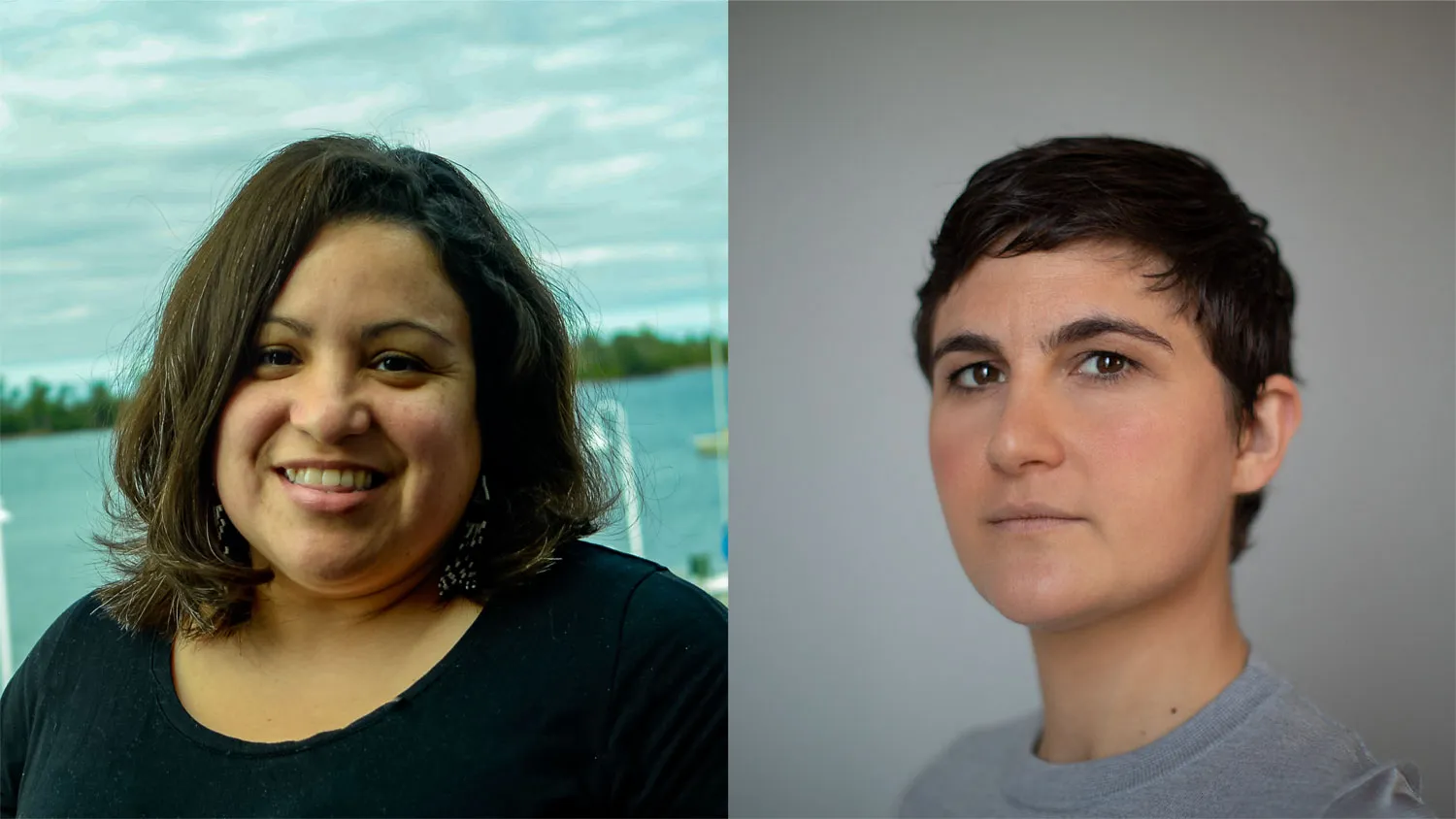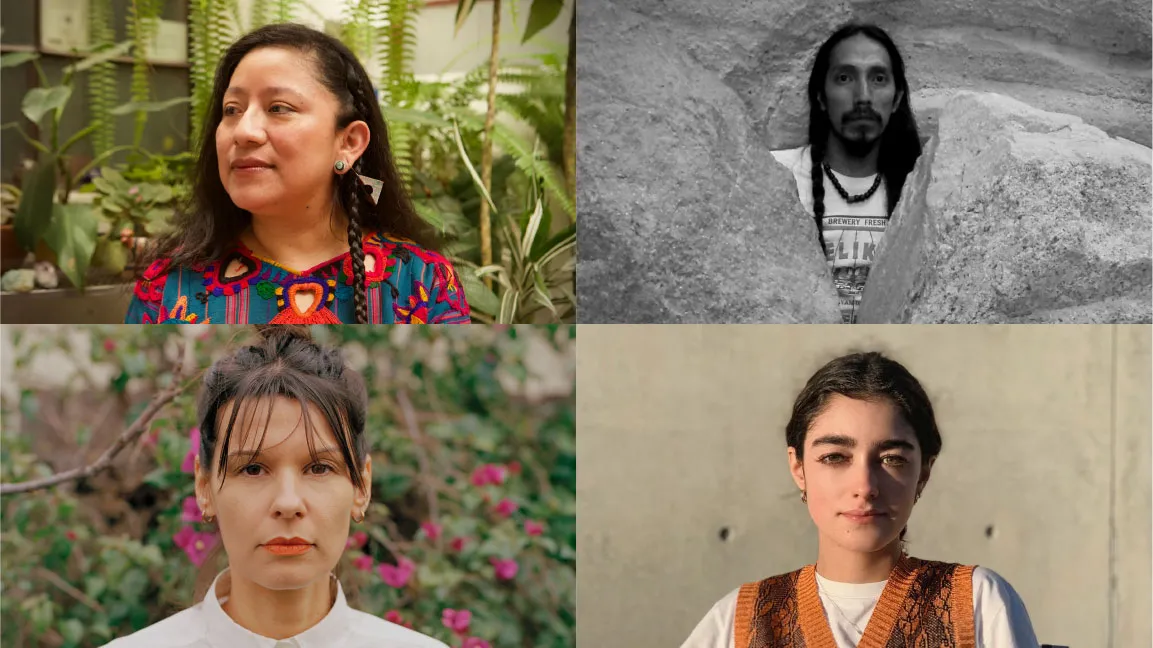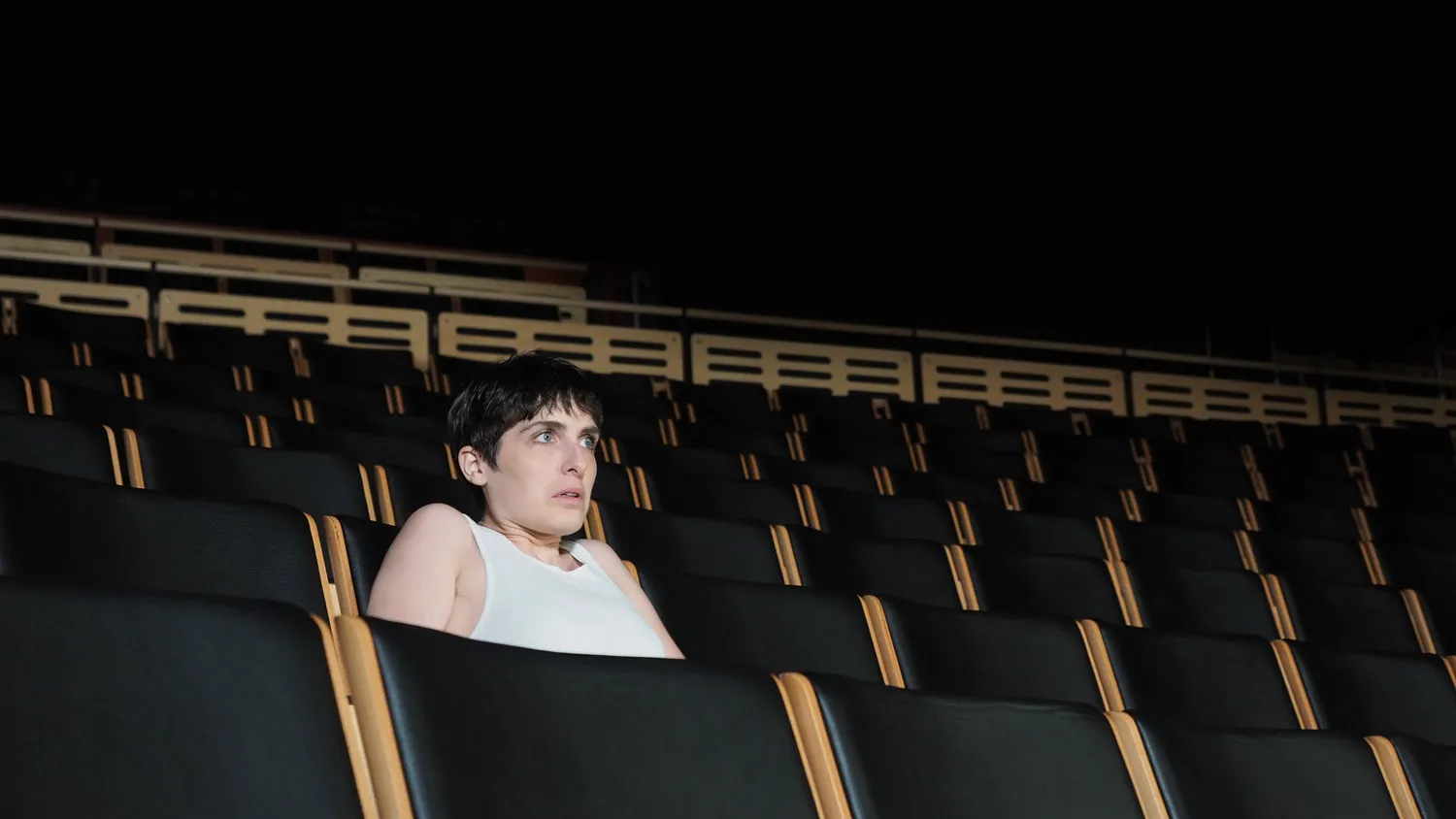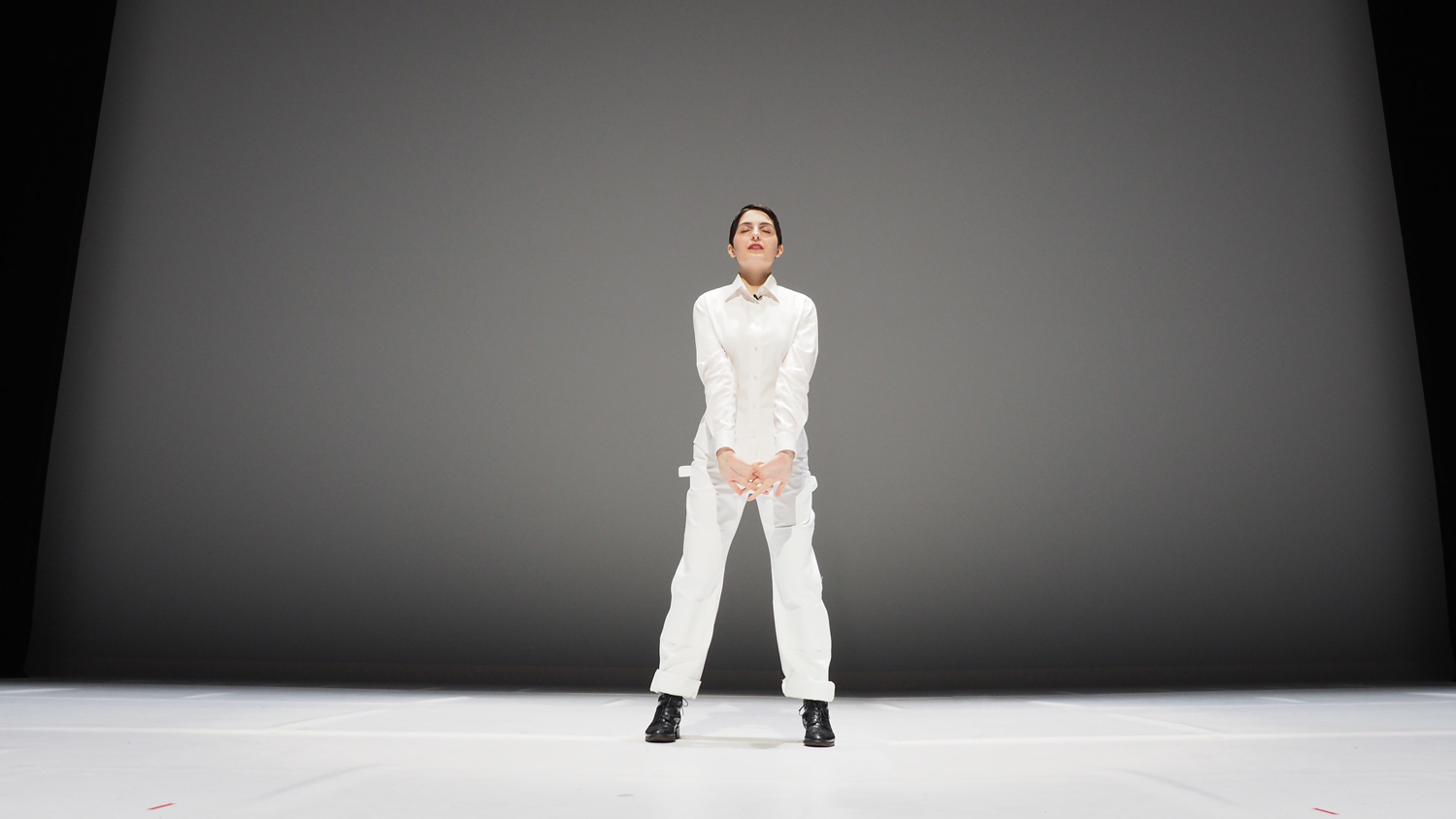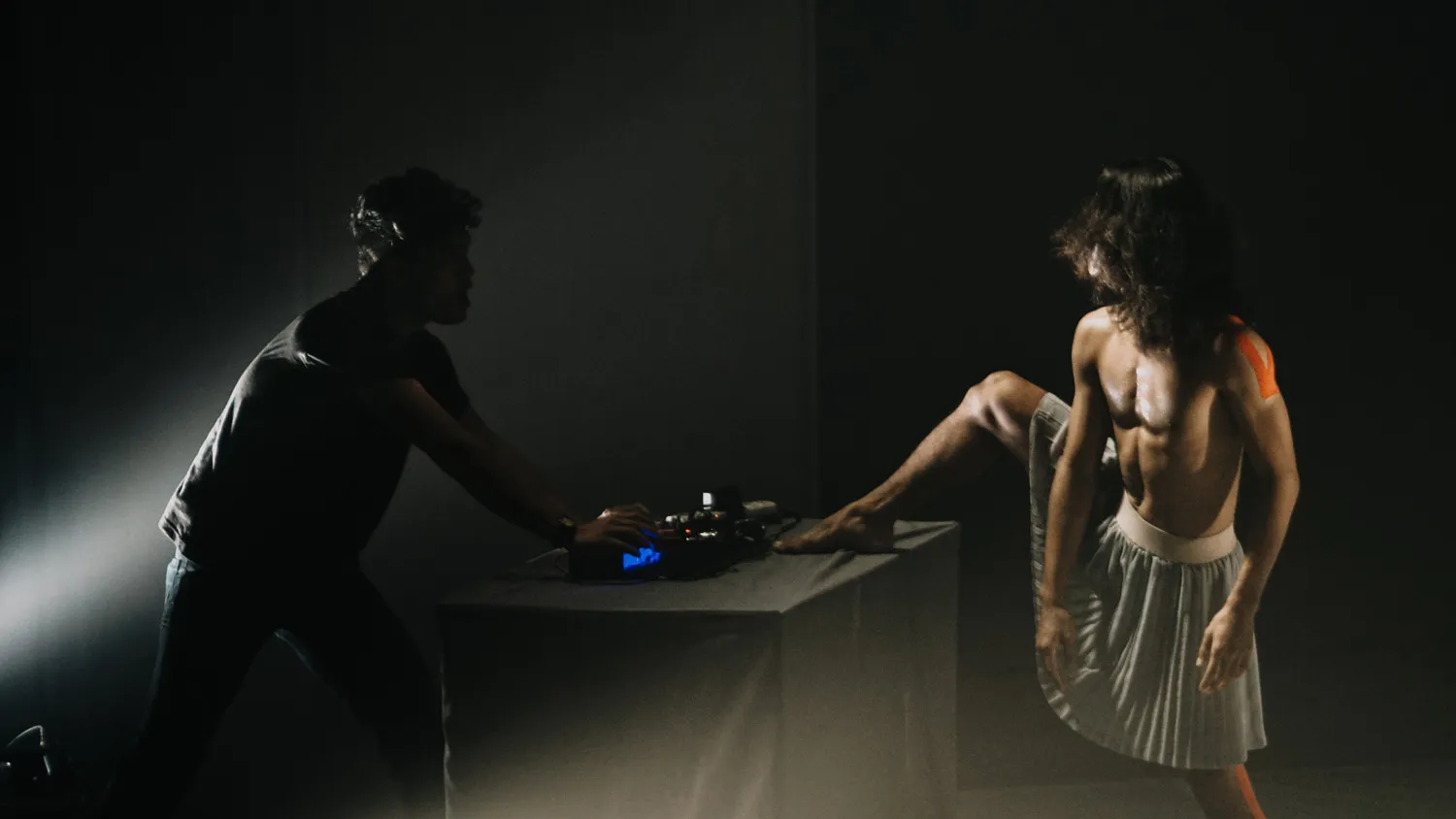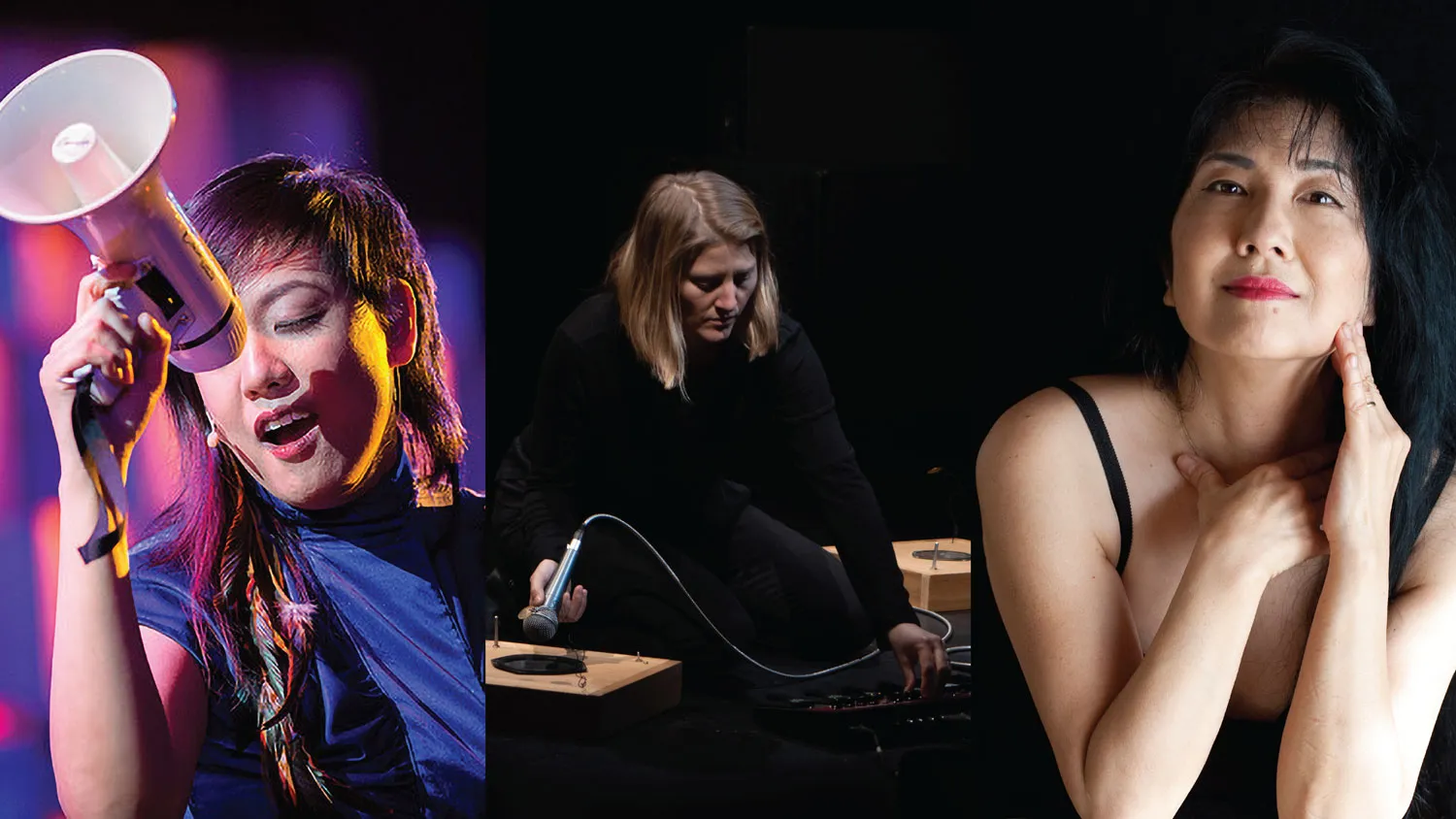
In Depth: Bora Yoon, Lesley Flanigan, and Miya Masaoka
Join us for a series of lunch hour conversations with EMPAC-commissioned composers Bora Yoon, Lesley Flanigan, and Miya Masaoka facilitated by Curator of music Dr. Anne Leilehua Lanzilotti.
Korean-American composer, vocalist, and multi-instrumentalist Bora Yoon is an interdisciplinary artist who conjures audiovisual soundscapes using digital devices, voice and found objects and instruments from a variety of cultures and historical centuries—to formulate an audiovisual storytelling through music, movement and sound. Using sensory gloves to embody the sonic landscape of her compositions, she will create a work that explores the intimacy and delicacy of the human voice. Yoon will create an hour-long solo work for singer and electronics that explores the intimacy and delicacy of the human voice, using sensory gloves to embody the sonic landscape of her compositions, activating the Wave Field Synthesis Array through movement.
Lesley Flanigan is an experimental electronic musician living in New York City. Inspired by the physicality of sound, she builds her own instruments using minimal electronics, microphones and speakers. Performing these instruments alongside traditional instrumentation that often includes her own voice, she creates a kind of physical electronic music that embraces both the transparency and residue of process—sculpting sound from a palette of noise and subtle imperfections. Her work has been presented at venues and festivals internationally, including The Red Bull Music Festival at Saint John the Divine (New York), De Doelen (Rotterdam), Sonar (Barcelona), The Pritzker Pavilion at Millennium Park (Chicago), the Guggenheim Museum (New York), The Kitchen (New York), The Broad Museum (Los Angeles), ISSUE Project Room (Brooklyn), TransitioMX (Mexico City), CMKY Festival (Boulder), the Roskilde Museum of Contemporary Art (Denmark) and KW Institute for Contemporary Art in Berlin. Flangian's new commissioned work for EMPAC will further explore these themes within the unique acoustics of our Concert Hall.
Miya Masaoka is a composer, sound artist and musician based in New York City. Classically trained, her work operates at the intersection of spatialized sound, frequency and perception, performance, social and historical references. Whether recording inside physical objects or the human body, within architecturally resonant spaces or outdoor resonant canyons, American composer Miya Masaoka creates incongruencies that feed the paradox of the contemporary condition. Her new solo work for Wave Field Synthesis Array and solo performer will connect the artistic practices of notated composition, alternative personas, and hybrid acoustic-electronic performance on Japanese traditional string instruments such as the koto and ichigenkin.
Main Image: Bora Yoon, Lesley Flanigan, and Miya Masaoka. Photos: Courtesy the artists.
